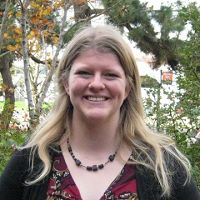Lybrand et al., 2019
A coupled microscopy approach to assess the nano-landscape of weathering
Lybrand, Rebecca A., Jason C. Austin, Jennifer Fedenko, Rachel E. Gallery, Erin Rooney, Paul A. Schroeder, Dragos G. Zaharescu, & Odeta Qafoku (2019)
Scientific Reports 9: Article number 5377 Cross-CZO
-
Calhoun, Catalina-Jemez, COLLABORATOR
-
Calhoun, INVESTIGATOR
-
Catalina-Jemez, INVESTIGATOR
-
Calhoun, INVESTIGATOR
Abstract
Mineral weathering is a balanced interplay among physical, chemical, and biological processes. Fundamental knowledge gaps exist in characterizing the biogeochemical mechanisms that transform microbe-mineral interfaces at submicron scales, particularly in complex field systems. Our objective was to develop methods targeting the nanoscale by using high-resolution microscopy to assess biological and geochemical drivers of weathering in natural settings. Basalt, granite, and quartz (53–250 ìm) were deployed in surface soils (10 cm) of three ecosystems (semiarid, subhumid, humid) for one year. We successfully developed a reference grid method to analyze individual grains using: (1) helium ion microscopy to capture micron to sub-nanometer imagery of mineral-organic interactions; and (2) scanning electron microscopy to quantify elemental distribution on the same surfaces via element mapping and point analyses. We detected locations of biomechanical weathering, secondary mineral precipitation, biofilm formation, and grain coatings across the three contrasting climates. To our knowledge, this is the first time these coupled microscopy techniques were applied in the earth and ecosystem sciences to assess microbe-mineral interfaces and in situ biological contributors to incipient weathering.
Citation
Lybrand, Rebecca A., Jason C. Austin, Jennifer Fedenko, Rachel E. Gallery, Erin Rooney, Paul A. Schroeder, Dragos G. Zaharescu, & Odeta Qafoku (2019): A coupled microscopy approach to assess the nano-landscape of weathering. Scientific Reports 9: Article number 5377. DOI: 10.1038/s41598-019-41357-0
 This Paper/Book acknowledges NSF CZO grant support.
This Paper/Book acknowledges NSF CZO grant support.
Explore Further





